Outsmart Largemouth Bass in Any Condition: Your Ultimate Guide to Lure Colors
Navigating the world of largemouth bass fishing can often feel like trying to solve a complex puzzle. With so many variables at play, from the ever-changing water conditions to the elusive nature of the bass themselves, it's easy to feel overwhelmed. You're not alone if you've cast your line time and again, only to be met with frustration instead of that triumphant catch. This challenge largely stems from a crucial aspect many anglers overlook: selecting the right lure colors.
Largemouth bass are cunning creatures, with behaviors and preferences that shift with their environment. The key to consistently catching them lies in understanding these patterns and using them to your advantage. That’s where the importance of selecting the right lure colors comes into play. The color of your lure can make or break your fishing success, especially when you’re aiming to outsmart a species as adaptable as the largemouth bass.
In this guide, "Outsmart Largemouth Bass in Any Condition: Your Ultimate Guide to Lure Colors," we'll dive deep into the art of choosing the best lure colors for bass fishing. You'll learn how to match your lure to the conditions at hand, ensuring you're as appealing as possible to those elusive largemouths. From understanding how bass behave in varying water visibilities to mastering the selection of colors that will make them bite, this guide is your first step towards becoming the angler who always knows what to throw in any situation. Let's unlock the secrets together and transform your largemouth bass fishing adventures.
Table of Content
- How Water Clarity Influences Lure Selection
- Lure Color Selection for Year-Round Bass Fishing Success
- Picking the Perfect Lure Colors for Different Water Conditions
- Lure Colors For HIGH Underwater Visibility
- Lure Colors For MEDIUM Underwater Visibility
- Lure Colors For LOW Underwater Visibility
- Factors That Impact Your Visibility Below the Surface
- Lure Color Chart - Helps you Choose the Correct Lure Color for Every Water Condition
See or Be Seen: How Water Clarity Influences Lure Selection
When I head out to fish for largemouth bass, the first thing I consider isn’t my gear or even the spot I’ve chosen. It’s the water itself. Over the years, I’ve learned that understanding underwater visibility is just as important as picking the right ultralight fishing lures. Whether the water's as clear as glass or murky like chocolate milk, clarity changes how bass see your lure and, ultimately, whether they’ll strike.
Water clarity isn’t just about appearance; it’s shaped by sunlight, the type of bottom (sand, mud, or rock), and weather conditions. You can never assume it’ll stay the same, so adaptability becomes your best fishing skill. That’s why I rely heavily on tools like a bass lure color selection chart or a fishing lure color selection chart to help me determine the best colors for the day.
For crystal-clear water, I stick to natural and subtle lure colors that mimic prey. If you’re wondering what color lure to use in clear water, think realistic shades like translucent silver or light green. When the water visibility is moderate, around one to five feet, flashier colors with a bit of shimmer are great choices. These stand out just enough without looking unnatural. Now, in murky water, bright, bold colors or high-contrast lures are your best bet. They create a silhouette that’s hard for bass to ignore.
Learning how to choose lure colors for clear water or understanding how water clarity affects lure color choice has completely changed my fishing game. Whether you’re curious about what color is most visible underwater or looking for the best color lures for bass in tricky conditions, taking time to assess the water clarity can make all the difference. Trust me, it’s worth it.
Mastering the Seasons: Lure Color Selection for Year-Round Bass Fishing Success
When it comes to largemouth bass fishing, I’ve learned that understanding how the seasons affect bass behavior is critical. Over the years, I’ve tailored my approach, using my favorite ultralight fishing lures and a well-loved bass lure color selection chart to match the seasonal conditions. Combining seasonal insights with the right colors for water clarity has been the key to landing more fish and enjoying a successful day on the water.
Winter Bass Fishing
Winter is always a challenge, but it’s not impossible to catch largemouth bass if you adjust your strategy. During the colder months, bass become sluggish due to the drop in water temperature. They often retreat to deeper, more stable waters where their metabolism slows. This means your presentation needs to match their low energy levels. I rely on subtle and natural colors, often referencing a trusted fishing lure color selection chart to guide me. Shad, white, and chartreuse are my go-to options because they create just enough visual contrast without overwhelming wary fish.
I gravitate toward soft plastics like stickbaits, plastic creature lures, and jigs, focusing on mimicking an easy meal. When visibility is poor due to colder and often murkier conditions, selecting lures based on how water clarity affects lure color choice is essential. For me, it’s all about making the lure visible but not overly flashy.
Spring Bass Fishing
Spring is a magical time for bass fishing, and I find it to be one of the most rewarding seasons. With rising water temperatures, bass become increasingly active as they prepare for the spawn. They move into shallow areas, feeding aggressively, which creates an exciting opportunity to experiment with a variety of ultralight fishing lures.
When I’m figuring out what color lure to use in clear water during spring, I stick to shades that mimic natural prey. Translucent greens, silvers, and browns work wonders in clear, shallow water where bass have better visibility. However, if I find myself in murky or stained water, I make the shift toward brighter or high-contrast colors, such as chartreuse or black-and-blue combinations. Spring rewards an adaptable approach and an eye for how water clarity affects lure color choice.
Summer Bass Fishing
Summer fishing is all about battling the extremes. When the heat pushes bass deeper, I often find myself focusing on early mornings or evenings when they’re more active. Oxygen levels in shallow waters drop during the day, so bass move between deeper cool zones and shallower feeding grounds.
For summer, I bring out some of my best color lures for bass, especially brighter hues that stand out in shadowy depths or murky waters. Vibrant options like bright reds and oranges or high-gloss finishes are excellent choices. If you’ve asked yourself what color is most visible underwater in these conditions, brighter colors almost always win.
Fall Bass Fishing
Fall mirrors spring in many ways, with bass feeding in preparation for winter. During this period, ultralight fishing really shines as bass move shallow again. Clear water calls for finesse and natural colors. Lures like metallic silvers and greens, matched to a bass lure color selection chart, help me catch their attention.
For murky water, brighter colors, such as white or chartreuse, are highly effective. Lure color selection for murky water can be tricky, but thinking about what creates the most contrast is your best approach.
By adapting my ultralight fishing lures and color choices to each season and leveraging tools like a fishing lure color selection chart, I’ve been able to improve my catch rates year-round. The best color lures for bass aren’t one-size-fits-all; they’re a matter of matching the conditions and the season. Trust me, this strategy makes all the difference!
Crystal Clear Choices: Picking the Perfect Lure Colors for Different Water Conditions
When I’m out with my ultralight fishing setup, I know success depends on one key factor: matching my lures to the water’s clarity. Whether I’m choosing ultralight fishing lures or deciding what color lure to use in clear water, understanding how water clarity affects lure color choice has made all the difference in my bass fishing game.
For crystal-clear water, subtle, natural tones like silver or light green work wonders. They mimic the fish’s natural prey and answer the question of what color is most visible underwater without spooking the bass. When I need to reference options for murky water, my go-to bass lure color selection chart leads me to bright hues like chartreuse or bold contrasts for maximum visibility.
Using a fishing lure color selection chart has become second nature, helping me choose the best color lures for bass no matter the conditions I face. It’s all about adapting and making each cast count!
LURE COLORS FOR CLEAR UNDERWATER VISIBILITY
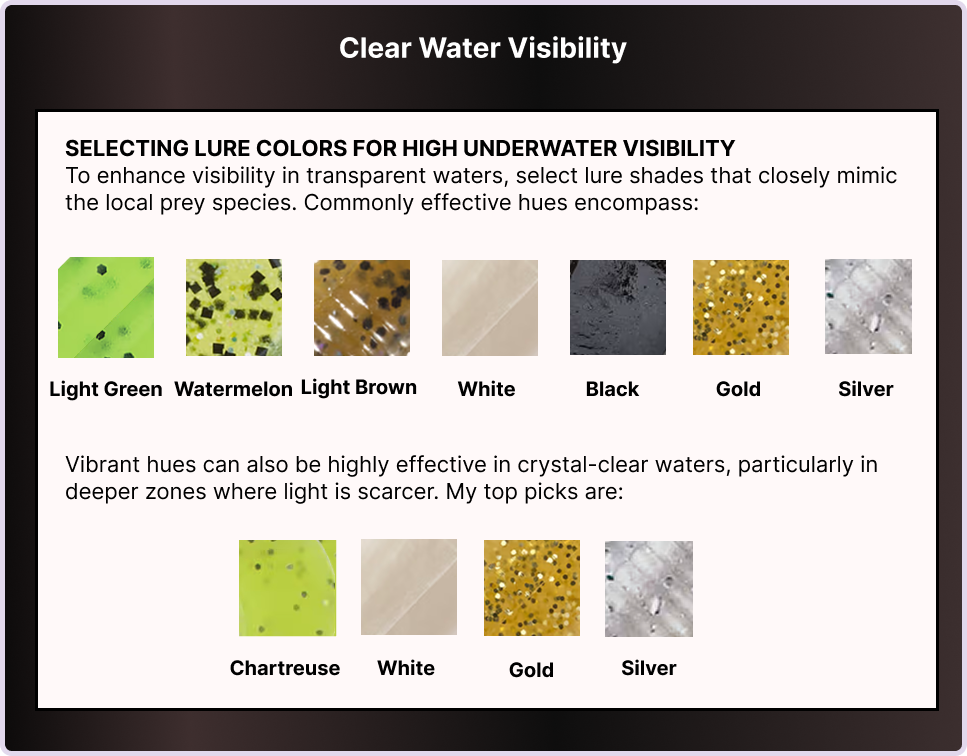
When I’m fishing in crystal-clear water, I know subtlety is my best friend. The goal is always to mimic natural prey as closely as possible, so I reach for ultralight fishing lures in shades like green pumpkin, watermelon, or shad. These colors blend beautifully into clear water environments, making them some of the best color lures for bass when visibility is high.
Knowing what color lure to use in clear water can make or break your day, and I always refer back to my trusted bass lure color selection chart or fishing lure color selection chart for guidance. Soft plastics and finesse jigs in these natural hues catch bass off guard, ensuring your presentation feels authentic. Learning how to choose lure colors for clear water has taught me how water clarity affects lure color choice. For me, it’s all about staying subtle and letting the lure do the talking!
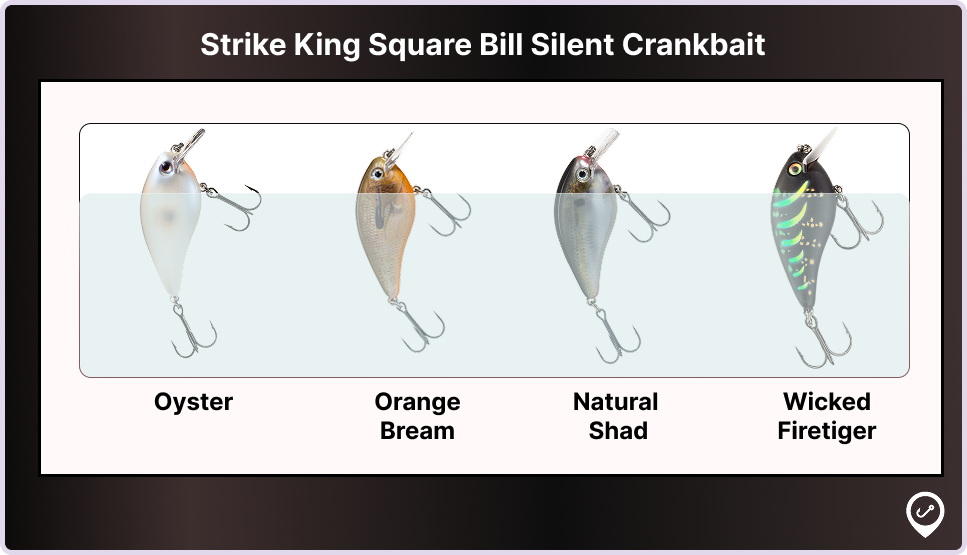
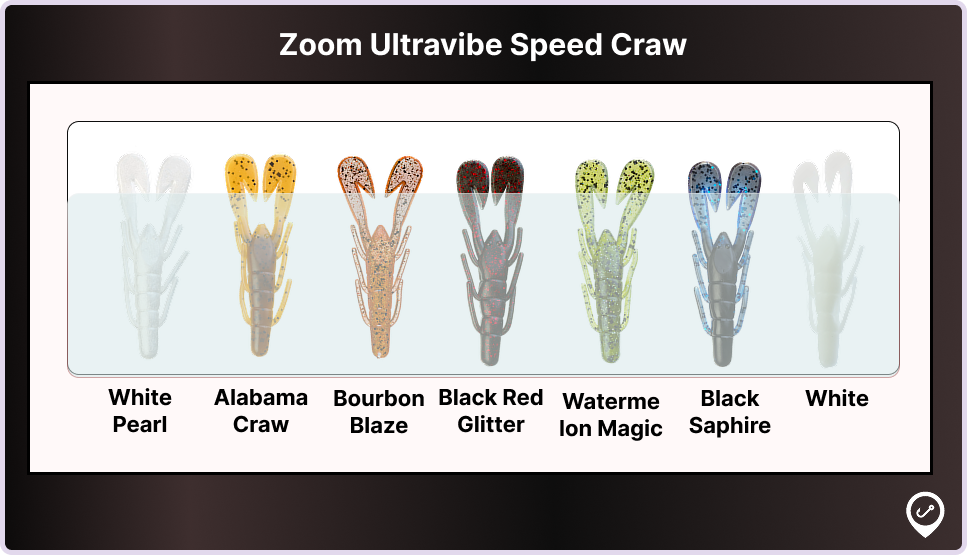
Zoom Ultravibe Speed Craw: Use Alabama Craw or Watermelon Magic in clear water for natural prey mimicry and improved bass fishing success.
LURE COLORS FOR MEDIUM UNDERWATER VISIBILITY
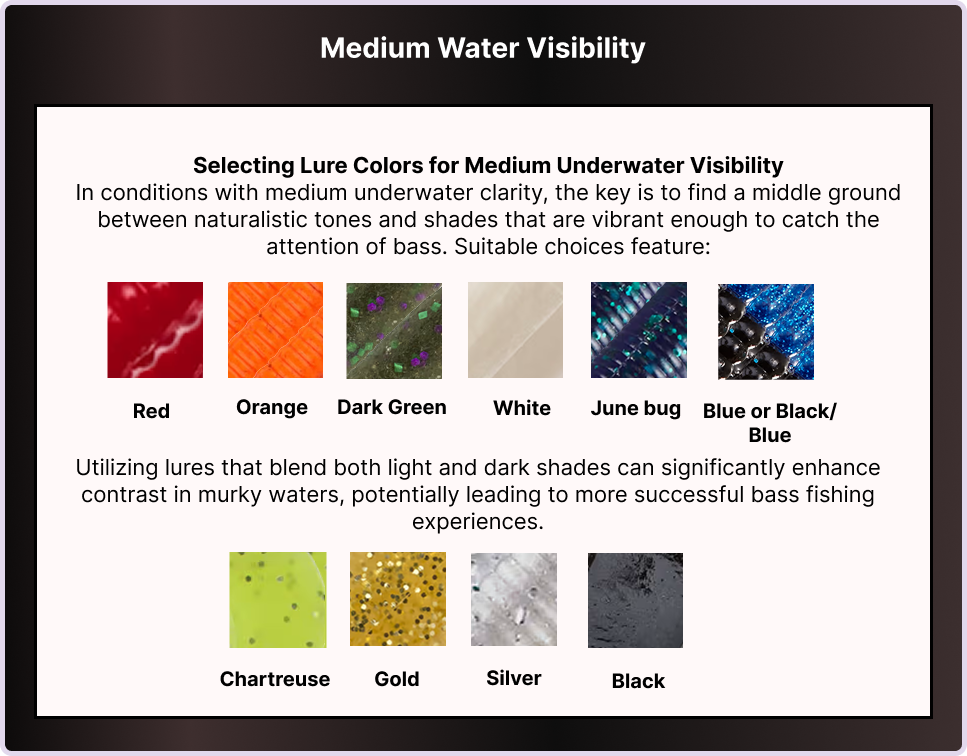
When I’m fishing in moderately clear water, I know it’s time to adjust my approach. With visibility slightly reduced, I aim to make my lures stand out just enough to grab attention without scaring off cautious bass. For me, using ultralight fishing lures in colors like chartreuse, light orange, or green pumpkin with bright accents, such as red or gold flecks, has proven effective. These shades strike a perfect balance, catching the eye while still looking natural.
I often consult my bass lure color selection chart or fishing lure color selection chart to guide my choices. Crankbaits and spinnerbaits in these colors are my favorites because they create movement and flashes that bass find irresistible. Whether you’re figuring out how water clarity affects lure color choice or deciding what color lure to use in clear water vs. murkier conditions, moderate visibility calls for lures that subtly command attention while staying believable.
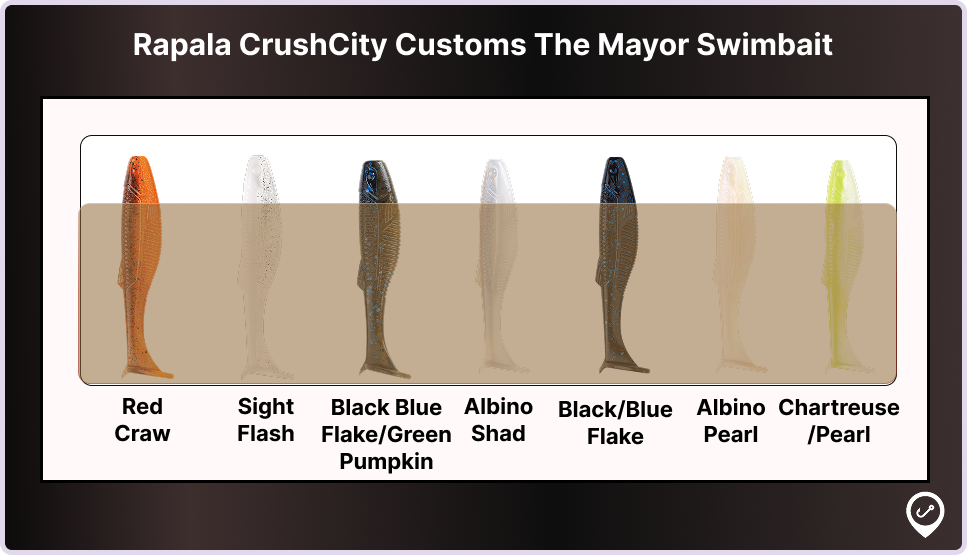

LURE COLORS FOR LOW UNDERWATER VISIBILITY

When I’m faced with murky water, I know it’s time to make my lures bold and loud. With visibility so low, choosing ultralight fishing lures in bright colors becomes crucial. Neon pinks, vibrant whites, and even bold yellows are my go-to selections. These shades don’t just stand out visually; they cut straight through the gloom, ensuring bass can locate them easily. It’s all about understanding what color is most visible underwater in those darker conditions.
For an added edge, I often pair color with action. Buzzbaits and vibrating jigs are excellent because they create noise and vibrations, which stimulate a bass’s lateral line senses. If you’re unsure, a quick glance at a reliable bass lure color selection chart or fishing lure color selection chart can guide you.
Learning how to choose lure colors for clear water is key, but murky water tactics rely on noise and flash. These little adjustments always pay off for me!
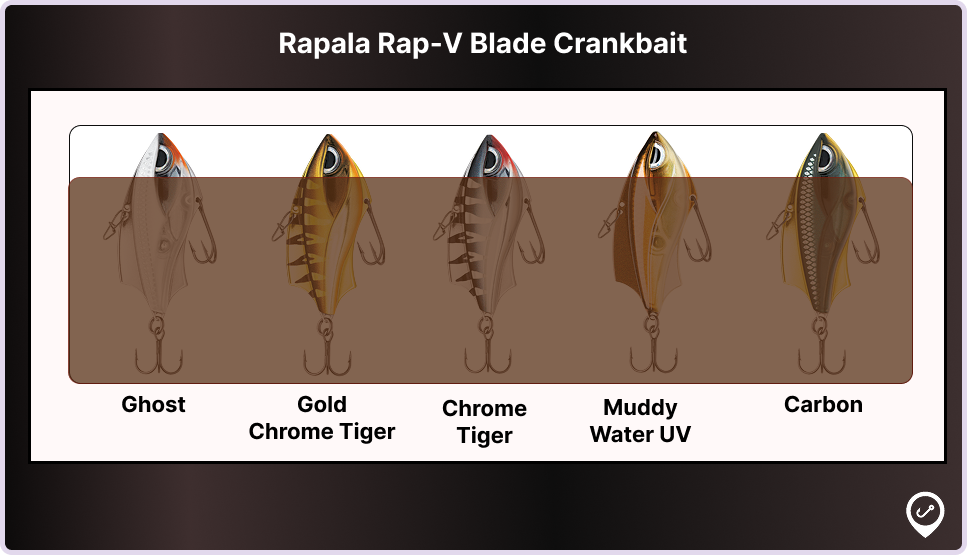
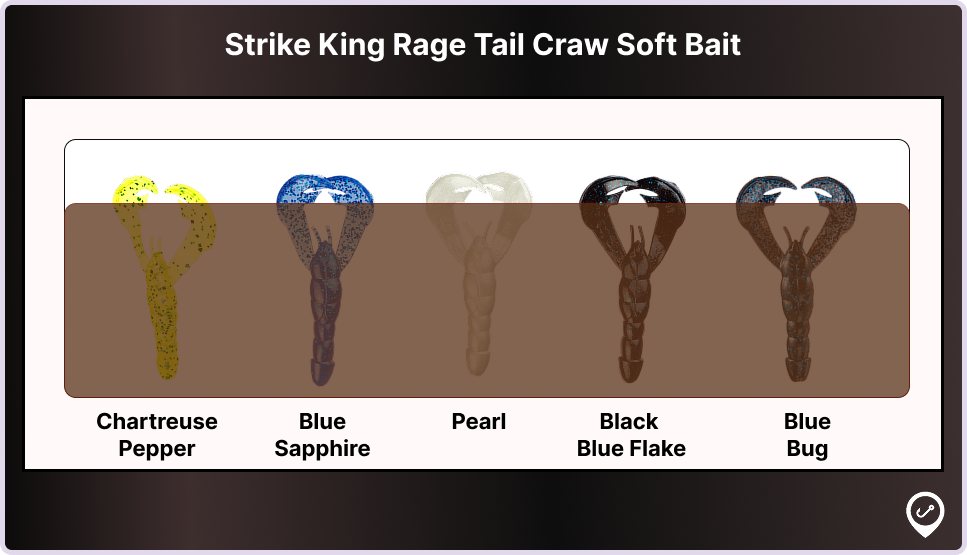
UNIVERSALLY EFFECTIVE LURE COLORS
Regardless of the water clarity, there are a few lure colors that consistently perform well. Black, white, and chartreuse lures are incredibly versatile and can provoke strikes in a variety of conditions. These colors offer high visibility and contrast, making them a safe bet when you're uncertain about the water's clarity or when transitioning between different fishing spots.
By carefully selecting your lure colors based on the clarity of the water, you significantly increase your chances of success in the world of largemouth bass fishing. Remember, the right color can spell the difference between a day of frustration and a triumphant haul. So, arm yourself with this knowledge, and let your lure colors be your secret weapon in conquering the waters.
Factors That Impact Your Visibility Below the Surface
When I head out for a bass fishing trip, I’ve realized that visibility below the surface is everything. Getting the right lure color can mean the difference between an average outing and an unforgettable day with big catches. Here’s a breakdown of the key factors I always consider before selecting my lure, with some tips that have truly made a difference in my fishing success.
Water Clarity
Water clarity is like a window into the underwater world. I find it crucial to evaluate how clear or murky the water is before choosing a lure color.
- Clear Water: When fishing in clear water, I opt for natural and subtle tones like greens, tans, or translucent shad patterns. These mimic real prey and are less likely to spook wary bass. Using ultralight fishing lures in these colors is particularly effective.
- Murky Water: On the other hand, murky water demands something brighter. Lures in chartreuse, white, or even neon pink stand out and attract attention. Bright colors paired with vibration or flash create a double attraction for bass in reduced visibility conditions.
Understanding how water clarity affects lure color choice not only improves my odds but also explains why certain colors work.
Depth and Light Penetration
I’ve learned that depth changes everything about how colors look underwater.
- Shallow Waters: Here, natural light enhances visibility. Bright or fluorescent colors are perfect for catching a bass’s attention within the first few feet of water.
- Deeper Waters: Reds disappear in deeper layers, so darker hues such as blues and purples become more visible. I also rely on lures with reflective elements to compensate for reduced light.
Knowing what color is most visible underwater makes depth a less intimidating factor during my fishing trips.
Bottom Color
The makeup of the lake or river bottom acts as a backdrop for your lure.
- Dark or Muddy Bottoms: I prefer vibrant, high-contrast lures like yellow or white, which stand out against the darker background.
- Light or Sandy Bottoms: Subtle, earthy tones like green pumpkin or brown are my go-to choices since they blend naturally, mimicking the baitfish bass feed on.
This insight has led me to consult a bass lure color selection chart often before deciding my color strategy for the day.
Light Conditions
Light is always shifting on the water, affecting the appearance of my lures.
- Bright Days: Bold, shiny lures excel when sunlight is abundant, creating enticing reflections underwater.
- Overcast Days: Softer, matte, or translucent lures become more effective, blending well with less vibrant surroundings.
Seasonal Preferences
Finally, I always consider the time of year and what bass are feeding on.
- Spring: Bass often chase after shad, so silver or white lures work wonders.
- Fall: This is prime time for crayfish imitations, so orange or dark brown lures are the best color lures for bass during this season.
- Milk
Matching your lure to seasonal patterns can turn knowledge into larger catches. Tools like a fishing lure color selection chart come in handy when fine-tuning your strategy.
By keeping these factors in mind, I’ve been able to adapt to any condition on the water. That’s what makes bass fishing so rewarding!
Navigating the Waters: Understanding Turbidity
One thing I’ve learned during my time on the water is how much turbidity, or water cloudiness, impacts my fishing success. Turbidity occurs when tiny particles like silt, clay, and organic matter are suspended in the water. It’s not always something you can spot at first glance, but if you pay attention, you’ll see its effects. Stormwater runoff, agricultural discharge, or even the movement of fish can stir up these particles, making the water murky and changing how effective my ultralight fishing lures are.
The first step in adapting to these conditions is understanding how water clarity affects lure color choice. If you’re like me, you’ve probably flipped through a bass lure color selection chart or a fishing lure color selection chart to figure out the perfect match. When water clarity goes down, the best color lures for bass are bold, bright, and attention-grabbing. For turbid waters, I go for neon yellows, whites, or even chartreuse, as they’re visible and mimic prey movement well.
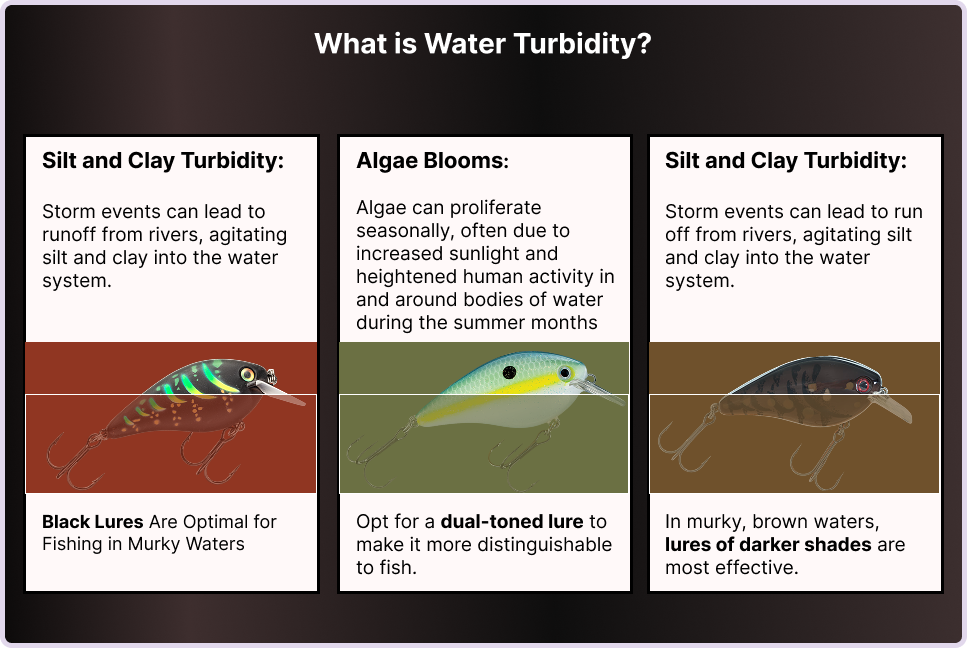
But turbidity doesn’t just affect how bass see; it changes how they hunt. It’s not simply about learning what color lure to use in clear water, but also adjusting for murky conditions where bass rely more on vibrations and movement. Buzzbaits or vibrating jigs are my top picks because they tap into a bass’s lateral line system to detect prey.
Understanding turbidity has improved my fishing tremendously, teaching me exactly how to adjust my ultralight techniques for every water condition.
Get Ready to Make a Splash!
When it comes to largemouth bass fishing, I’ve found that knowing how to choose lure colors for clear water or murky conditions can completely change the game. Understanding how water clarity affects lure color choice is essential, and tools like a bass lure color selection chart or fishing lure color selection chart are my go-tos. Whether I’m using ultralight fishing lures in crystal-clear waters or figuring out what color is most visible underwater in murkier spots, having this knowledge makes every cast more intentional.
If you’re wondering what color lure to use in clear water, natural tones like greens and shad patterns work wonders. For murkier conditions, I’ve had great success with bright, bold lures in chartreuse or white. The best color lures for bass will depend on the conditions, but a little strategy goes a long way.
Grab your gear, pick your lures wisely, and get ready to enjoy some incredible hookups!
In Conclusion: Simplifying Lure Selection with Depth and Color Insights
When I’m choosing a lure for largemouth bass fishing, I always think of it like selecting the perfect key for a locked treasure chest. The first thing I’ve learned is how water depth and clarity completely change the way colors look underwater. Reds disappear fast as you go deeper, while brighter or high-contrast colors, like chartreuse or white, become essential in murky waters. It’s a fascinating dynamic that has really shaped how I use ultralight fishing lures.
I also rely on tools like a bass lure color selection chart or fishing lure color selection chart to guide my decisions. Whether I’m figuring out what color lure to use in clear water or strategizing for murky conditions, these charts have helped me understand how water clarity affects lure color choice. For example, in clear water, the best color lures for bass mimic natural prey, like green pumpkin or shad tones. Meanwhile, murky water calls for brighter colors that bass can spot even in low visibility.
But color isn’t the only thing that matters. Adding action, vibration, or flash to a lure often makes a huge difference. Crankbaits and buzzbaits, particularly those with reflective or noisy features, can trigger strikes when visibility is poor.
Ultimately, I’ve found that my success improves when I try to see everything from the bass’s perspective. Choosing ultralight fishing lures with the right color and movement isn’t just strategic; it’s the secret to unlocking my next big catch.
How to Choose the Correct Lure Colors for Largemouth Bass

FAQ
What are ultralight fishing lures, and why are they ideal for beginners?
Ultralight fishing lures are smaller, lighter lures that are easy to cast and retrieve. They are ideal for beginners because they require less specialized equipment, making them easier to handle. Additionally, ultralight lures are incredibly versatile and effective for targeting smaller fish species, which are often more abundant and cooperative for novice anglers.
How do I determine what color lure to use in clear water for ultralight fishing?
When fishing in clear water, it’s best to use natural-colored ultralight fishing lures that mimic the appearance of real baitfish. Look for greens, silvers, and translucent shades that won’t spook fish. These subtle tones are more effective because bass can closely inspect your lure in such conditions.
What color is most visible underwater, and how does this affect lure selection?
The visibility of colors underwater depends on depth and water clarity. Bright colors like chartreuse and white are among the most visible in murky water, while natural colors like green and blue perform better in clear water. This knowledge can help you match your lure to the conditions and improve your chances of success.
How does a bass lure color selection chart help beginners choose the right lures?
A bass lure color selection chart simplifies the process of choosing the right lure by outlining which colors work best in specific water conditions. For example, it might recommend brighter lures for stained water and natural tones for clear water, giving beginners a reliable guide to follow.
What should I consider when using a fishing lure color selection chart for murky water?
When using a fishing lure color selection chart for murky water, look for recommendations on bold, vibrant shades like chartreuse, white, or neon. These colors stand out in low visibility, making them perfect for murky conditions. Additionally, pairing these colors with lures that create vibrations increases their effectiveness.
What are the best color lures for bass in low-visibility water conditions?
In low-visibility water, the best color lures for bass include chartreuse, white, orange, or even black. These colors create contrast and are easier for bass to detect. Choosing lures with built-in flash or vibration for added attraction can also enhance your results.
How does water clarity affect lure color choice when fishing for largemouth bass?
Water clarity is one of the biggest factors in lure color choice. In clear water, natural and subtle colors are ideal, while in murky water, bright and bold colors become more effective. Understanding how water clarity affects lure color choice helps you adapt your strategy based on conditions.
What are the top tips for selecting Largemouth Bass Lures when using ultralight gear?
When using ultralight gear, focus on small, lightweight lures that mimic the natural prey of largemouth bass. Match the lure color to the water clarity and use a bass lure color selection chart for guidance. Also, consider lures with added vibration or flash to maximize their appeal.
How do I choose lure colors for clear water versus murky water?
For clear water, stick to natural colors like green, silver, or translucent tones to mimic real baitfish. For murky water, opt for vibrant shades like chartreuse, white, or bright orange to ensure greater visibility. Adjusting your color choices based on water clarity gives you a better chance of attracting bass.
Are there certain ultralight fishing lures that work better across different water clarities?
Yes, some ultralight fishing lures work well in various water clarities. For instance, lures in neutral tones like silver and green offer versatility in clear water, while dual-tone lures featuring bright and natural colors perform in both murky and clear water. Experimenting with these can help you cover more conditions effectively.
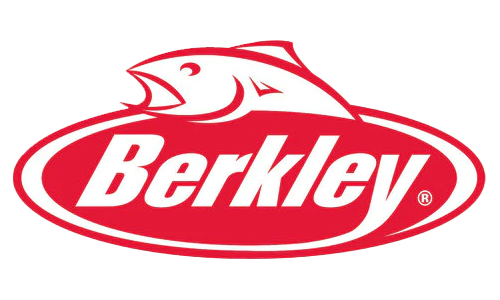



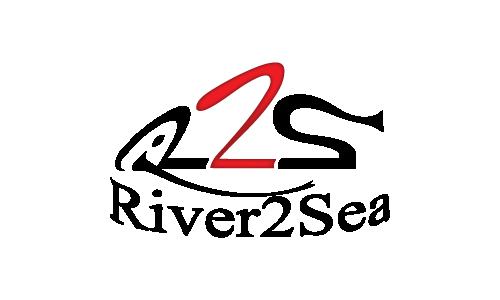


.png)


 1.png)
 1.png)





.png)
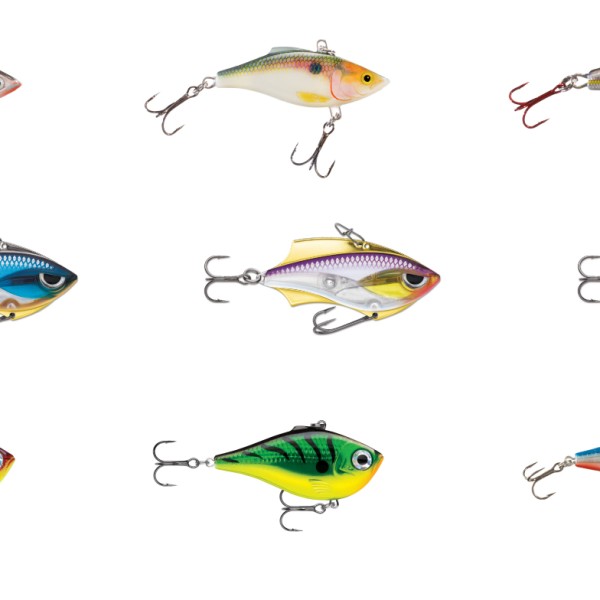
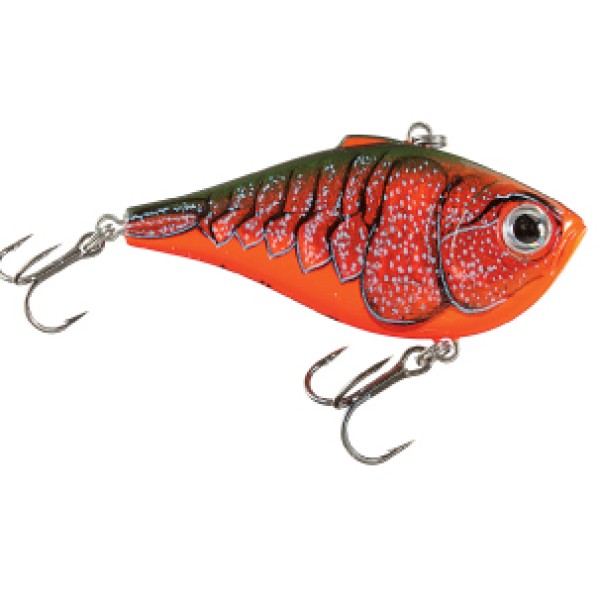
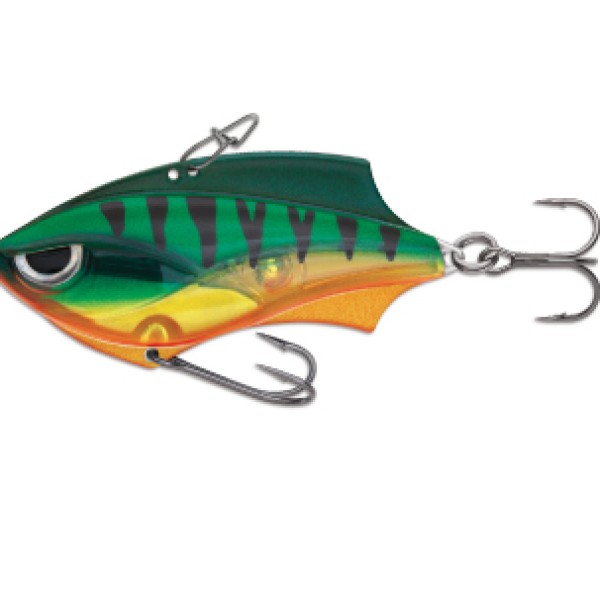
 Newsletter
Newsletter

